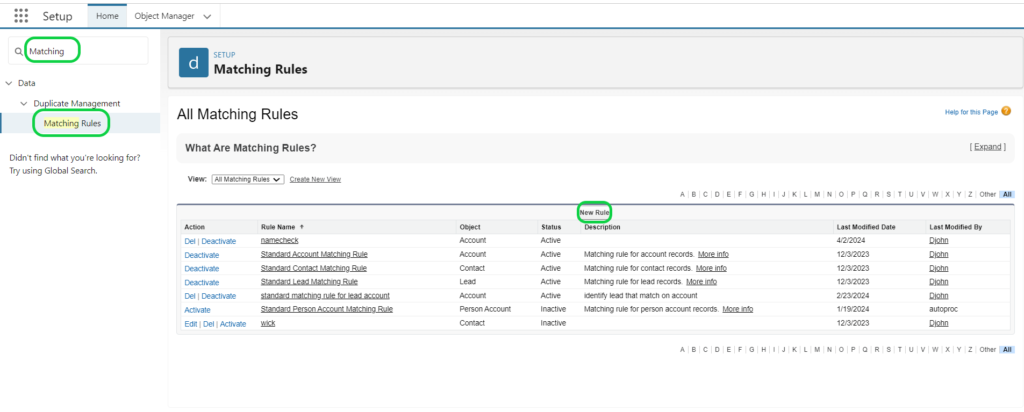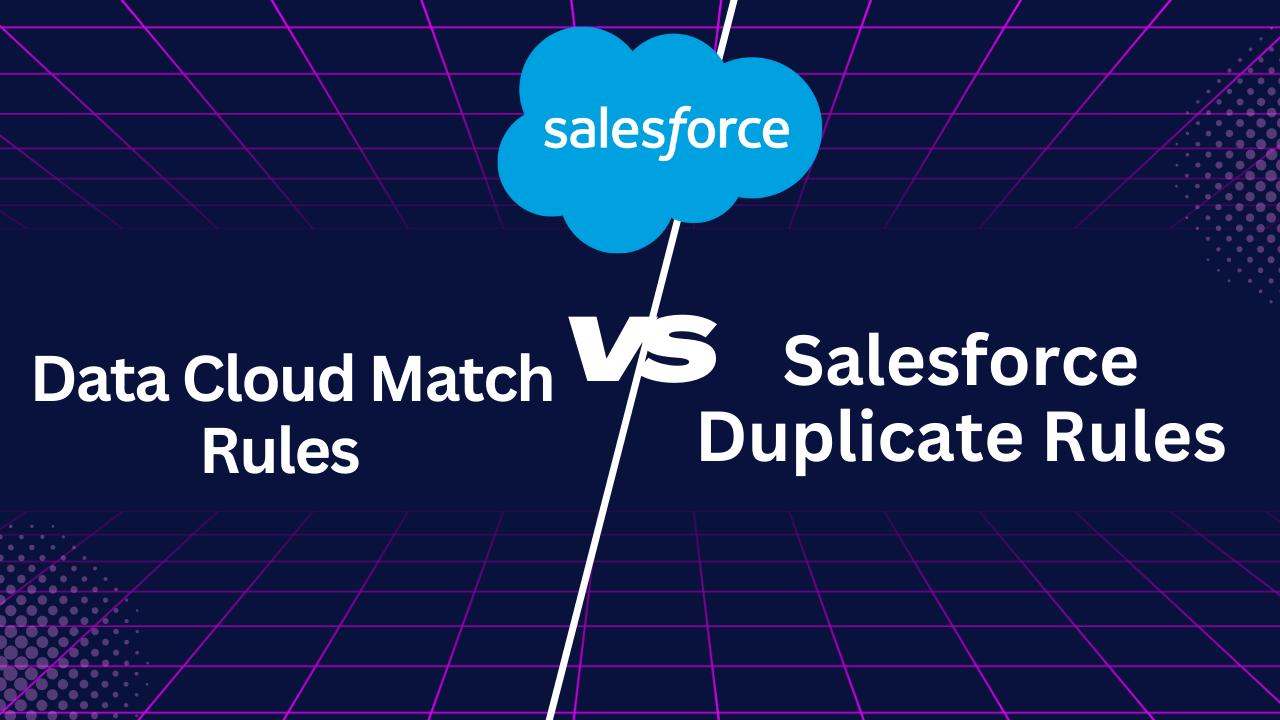Data Cloud Match Rules vs Salesforce Duplicate Rules
Data Cloud manages the resolution of identification. In summary, the goal is to identify a single perspective of a single person. The array of systems within your IT stack may not accurately reflect reality; whereas a person is just one in real life, they may have multiple “identities” according to the information in your company’s database. This highlights between Data Cloud Match Rules VS Salesforce Duplicate Rules, which are both aimed at reconciling these multiple identities.
Take into account the differences that one person may experience when interacting with all of the platforms inside your company. If my name is Rebecca, I might address myself as Becky, Rebecca, or Becca, depending on the circumstance or how I was feeling. Even though my mailing address might have changed due to a move, I would still be the same person.
Salesforce duplication and matching rules are probably familiar to you, but Data Cloud rules have the ability to go farther. We’ll be providing an outline of the two’s functions in this tutorial. Data Cloud Match Rules vs Salesforce Duplicate Rules both aimed at reconciling these multiple identities into a unified, accurate view.

Salesforce Duplicate Rules
Matching rules will specify which field to match in and how. “Email Field, Exact Match” and “Account Name, sales Match,” for instance. Matching rules by themselves have no effect. This is like following a recipe without a chef.

When and when duplicates are found will be controlled by duplicate rules using those matching rules. For instance, “Use Email, Exact Match” can be used to detect duplicates on leads and contacts during create and update, or “Use Account Name, sales Match” can be used to find duplicates on the account object upon creation. A chef using the recipe (i.e., the matching rule) is comparable to this.
Records Are Not Merged by Data Cloud
It’s crucial to keep in mind that Data Cloud does not merge records; rather, the records remain in the source system exactly as they did at the time of ingestion. Data Cloud is gathering information to create a “golden record” that may be utilized during the activation phases.
The purpose of Salesforce’s duplication and matching rules is to eliminate blatant duplicates before they get into Data Cloud.
I used the term “obvious” duplicates. The definition of “duplicate” varies throughout organizations, which complicates matters. Deliberate duplication occurs in some businesses; this is usually observed in Salesforce firms that have stringent (private) sharing policies across business units or regional divisions. It is up to your business to define duplicates; nevertheless, in order to avoid and remove true duplicates, policies must be put in place.
Businesses are greatly at risk from duplicate records. The experience of the customer or prospect may be jeopardized if sales or service teams get their “wires crossed” with colleagues who could already be working on that opportunity or case. Other examples of this include deceiving users when they have to sort through numerous records and biased reporting. Because of this, you should take duplicate rules very seriously and “nip that in the bud” before adding other data sources.
Data Cloud Match Rules
Now that your Salesforce database is clean—that is, devoid of avoidable duplicates—you may import your CRM information into Data Cloud. You are essentially making the identity resolution process more difficult if there are still avoidable duplicates.
Data enters the data cloud and turns into a stream of data. These are referred to as “streams” because data is continuously injected into Data Cloud at the frequency you specify. This is where data from your eCommerce platform and other sources, including your CRM, come together.

As previously indicated, Data Cloud regulations may expand on this. The two main categories in which Data Cloud matches are as follows:
- Deterministic: Regardless of capitalization differences, there is no question that the data points are all from the same person (i.e., not case-sensitive). This is similar to Salesforce duplicate rules’ exact matches.
- Probabilistic: This is similar to Salesforce duplication rules’ fuzzy matches. This allows for nicknames, acronyms, and other subtleties in the way individuals express themselves in their data. You can adjust these to a high, medium, or low accuracy level based on the degree of flexibility you want for the match regulations.
Rules for Data Cloud Reconciliation
Comparing this idea to Salesforce deduplication once again, you may know that you can apply specific “rules of thumb” to assist in mass deduplication if you’ve ever utilized a third-party solution. When there are several values that could be entered into a field, this is how to decide which one should be used. Reconciliation guidelines may apply:
- Last updated
- Most frequent
- Source priority (next point)
Reconciliation rules are limited to use on text, number, and alphanumeric fields; phone and email fields are not eligible for their application.
Summary
The primary lesson to be learned from this is that your Salesforce CRM data is affected by Salesforce duplication policies. Any connected data source can use Data Cloud identity resolution, including match and reconciliation criteria.
Data Cloud permits numerous records to coexist for the same individual, whereas Salesforce duplication rules prohibit the generation of duplicate entries based on a rule criteria. Instead of flattening the data into a super record, the identity resolution process decides which attributes to employ in a unified profile to represent the individual while preserving all source data and provenance. Additionally, the identity resolution mechanism will update the unified profile to reflect an individual’s best fit based on “moment-in-time” changes to the source data.
Keep in mind the proverb “garbage in, garbage out.” Clean away your Salesforce CRM data beforehand to avoid making the issue in Data Cloud worse. Eliminate duplicates that can be prevented, meaning those that were made inadvertently and escaped detection by the current matching and duplication procedures.




